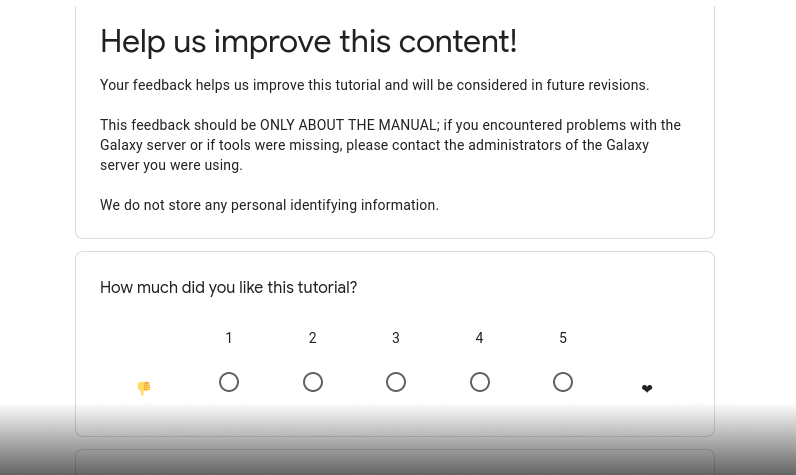Bacterial pangenomics
Under Development!
This tutorial is not in its final state. The content may change a lot in the next months. Because of this status, it is also not listed in the topic pages.
| Author(s) |
|
| Reviewers |
|
OverviewQuestions:
Objectives:
to do
to do
Requirements:
to do
to do
Time estimation: 1 hourLevel: Introductory IntroductorySupporting Materials:Published: Mar 14, 2025Last modification: Mar 14, 2025License: Tutorial Content is licensed under Creative Commons Attribution 4.0 International License. The GTN Framework is licensed under MITpurl PURL: https://gxy.io/GTN:T00496version Revision: 1
General introduction about the topic and then an introduction of the tutorial (the questions and the objectives). It is nice also to have a scheme to sum up the pipeline used during the tutorial. The idea is to give to trainees insight into the content of the tutorial and the (theoretical and technical) key concepts they will learn.
You may want to cite some publications; this can be done by adding citations to the
bibliography file (tutorial.bib file next to your tutorial.md file). These citations
must be in bibtex format. If you have the DOI for the paper you wish to cite, you can
get the corresponding bibtex entry using doi2bib.org.
With the example you will find in the tutorial.bib file, you can add a citation to
this article here in your tutorial like this:
{% cite Batut2018 %}.
This will be rendered like this: Batut et al. 2018, and links to a
bibliography section which will automatically be created at the end of the
tutorial.
Please follow our tutorial to learn how to fill the Markdown
AgendaIn this tutorial, we will cover:
Galaxy and data preparation
Hands On: Data Upload
Create a new history for this analysis
To create a new history simply click the new-history icon at the top of the history panel:
Rename the history
- Click on galaxy-pencil (Edit) next to the history name (which by default is “Unnamed history”)
- Type the new name
- Click on Save
- To cancel renaming, click the galaxy-undo “Cancel” button
If you do not have the galaxy-pencil (Edit) next to the history name (which can be the case if you are using an older version of Galaxy) do the following:
- Click on Unnamed history (or the current name of the history) (Click to rename history) at the top of your history panel
- Type the new name
- Press Enter
Import the contig file from Zenodo or from Galaxy shared data libraries:
https://zenodo.org/records/1/files/DRR187559_contigs.fasta
- Copy the link location
Click galaxy-upload Upload at the top of the activity panel
- Select galaxy-wf-edit Paste/Fetch Data
Paste the link(s) into the text field
Press Start
- Close the window
As an alternative to uploading the data from a URL or your computer, the files may also have been made available from a shared data library:
- Go into Libraries (left panel)
- Navigate to the correct folder as indicated by your instructor.
- On most Galaxies tutorial data will be provided in a folder named GTN - Material –> Topic Name -> Tutorial Name.
- Select the desired files
- Click on Add to History galaxy-dropdown near the top and select as Datasets from the dropdown menu
In the pop-up window, choose
- “Select history”: the history you want to import the data to (or create a new one)
- Click on Import
Pangenomics
Hands On: Task description
- PPanGGOLiN all ( Galaxy version 2.2.1+galaxy1) with the following parameters:
- param-collection “Select genome files”: Input dataset collection
TODO: Consider adding a question to test the learners understanding of the previous exercise
Question
- Question1?
- Question2?
- Answer for question1
- Answer for question2
Multi-sequence alignment
Hands On: Task description
- PPanGGOLiN MSA ( Galaxy version 2.2.1+galaxy1) with the following parameters:
- param-file “Input pangenome h5 file”:
pangenome_h5(output of PPanGGOLiN all tool)- “Partition”:
Core
TODO: Consider adding a question to test the learners understanding of the previous exercise
Question
- Question1?
- Question2?
- Answer for question1
- Answer for question2
Conclusion
Sum up the tutorial and the key takeaways here. We encourage adding an overview image of the pipeline used.

